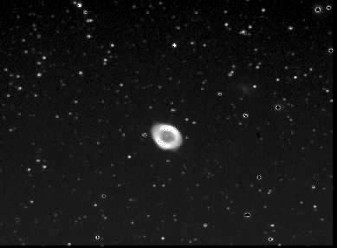Lymm Observatory
My interest in astronomy goes back to the 1970's, and was largely started by the Viking landings on Mars in 1976. Two years later my father and I built a 21 cm Newtonian reflector, and I used this telescope until 2002.
At first, probably like many beginners, I was mainly interested in the moon and planets. Eventually, however, I became interested in photometry - the measurement of the brightnesses of astronomical objects - its main appeal being that it offered a more quantitative way of observing. In the late 1980's I constructed a homemade photometer which used a Hamamatsu 1P28 photomultiplier tube as a detector. Observing with this photometer was quite hard work: the telescope was moved to measure objects sequentially (typically in a cycle sky-comparison-variable-sky...), it was limited to bright objects (basically stars you can see with binoculars) and it could only be used on particulary clear nights. Nevertheless it produced some good results. Highlights included complete lightcurves of the contact binary stars W UMa and AH Vir, and a recording of a flare on EV Lac. By 2000 it was clear that CCD (charged coupled device) cameras were a far more versatile detector for photometrists, and I took the plunge into CCD photometry by purchasing a Starlight Xpress MX916 camera. Originally this camera was used on the 21 cm Newtonian but now it is used with a 30 cm Schmidt Cassegrain. My favourite targets are rapidly varying, and often faint, variables which will 'perform' in the course of a few hours' observing. I now use AstroArt software for image acquisition, after experiencing timing problems with the original camera software. I also AIP4WIN for general viewing of the images during data reduction. Photometric analysis of the images is done with my own software, which is particularly suited to time-series photometry of faint objects.

